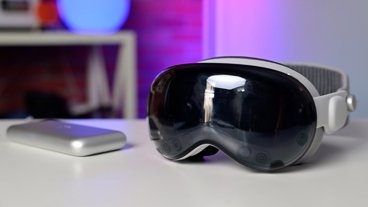Apple's workhorse MacBook Air is 15 years old
It's now barely recognizable from the original in all but name, but whether it's the new M2 MacBook Air or any other version, this superb line was unveiled on this day in 2008.
Cast your mind back to the last year of the George W. Bush Administration. Then, the phone you really wanted was the iPhone 3G, and the MacBook was a whole 1.08 inches thick.
Despite all the efforts of Microsoft Office and Lotus Notes, it was also still common to get internal mail in corporations, too. If you were in a big enough company at the time, you were familiar with those inter-office mail envelopes.
You know where this is going.
In 1984, Steve Jobs took the Mac out of a bag, and in 2001 he took an iPod out of his pocket. In 2007, he tantalized us by briefly taking an iPhone out of his jeans pocket but putting it back, saying "we'll leave it there for now."
Each unveiling was a bit of Jobs showmanship but that first moment is not what you remember of these famous product launches.
Whereas slipping a MacBook Air laptop computer out of an internal mail envelope got an oooh at the time, and you haven't forgotten it since.
Thus began the ultrabook category.
"There's something in the air"
That original MacBook Air launch took place at Macworld 2008, which would turn out to be Apple's penultimate appearance at the once-famous trade show. It was also Steve Jobs's last Macworld keynote, as Phil Schiller did the final 2009 one.
Fifteen years later, it's only really the latest version of the MacBook Air that has lost the sense of being absurdly thin. These days there are many PC laptops that emulate it, but the 2022 MacBook Air was the first model to lose its familiar wedge-like shape.
Even so, today's MacBook Air is unquestionably smaller than the first version.
That 2008 model was 0.76 inches high, 12.8 inches wide, 8.94 inches deep, and it weighed 3 lbs. The M2 MacBook Air from 2022 is only 0.44 inches high, 11.97 inches wide, 8.45 inches deep, and weighs 2.7 lbs.
Yet compared to what else was available in 2008, that original MacBook Air was so thin as to appear preposterous. With its full-size keyboard and full-size screen, the MacBook Air was so thin and light that it created a new category of laptop computers.
It was so thin and light that Apple produced a Guided Tour video whose whole purpose seems to be to convince users it was a full computer, not a compromise.
Presenting the first MacBook Air
Naturally, the purpose of the 2008 Steve Jobs presentation was to sell the MacBook Air. But just as he had done the year before with the iPhone, and just as he would do in 2010 with the iPad, Jobs took time to position the MacBook Air's place in the market.
"We went out and looked at all the thin notebooks out there," said Jobs on stage. "We looked at all of them out there and kind of tried to distill the best of the breed of all of them."
Jobs gave a list of typical specifications, such as these thin notebooks weighing 3 lbs, most having an 11-inch screen, and so on. He then went back through that list dissing screen sizes, keyboard sizes, and processor speeds.
He claimed three pounds was fine, though, which only left you suspecting that was one specification Apple hadn't been able to beat. Although if it felt as if Jobs was skipping over the weight as quickly as he could, three pounds was still impressive since the then-current MacBook weighed five pounds.
Plus, Jobs did then reveal that the new MacBook Air trounced the competition in all other specifications.
He singled out the Sony TZ Series as his main example, saying "they're good notebooks and they're thin."
But then he put up a side view graphic that showed the Sony TZ notebook's wedge shape, with its height dimensions listed. "Again, one of the best in the field," said Jobs, "1.2 inches down to 0.8 inches."
Then he overlaid a graphic showing the MacBook Air's similar wedge shape. But it was 0.76 inches at its thickest point, and 0.16 inches at its thinnest.
"Now I want to point something out here," said Jobs. "The thickest part of the MacBook Air is still thinner than the thinnest part of the TZ series."
He'd repeatedly stressed how there had been "too much compromising" by rivals to get to a small size, such as a smaller display and a reduced-scale keyboard. He stressed how the MacBook Air had no compromises.
MacBook Air compromises
But there were compromises.
"Perhaps its most interesting feature, however, is the one that is missing," said the New York Times in its coverage of the launch. "The new notebook does not come equipped with an optical drive for playing CDs and DVDs, though an external one is available as an option for $99."
Today, you watch that launch and it doesn't occur to you to look for a CD drive. So that was a compromise, but ultimately one that didn't matter.
Whereas there were compromises that mattered a lot.
That first MacBook Air was slow, and it overheated enough that Apple released a patch to fix it — but it didn't.
So looks and weight weren't everything, although they tended to be everything that reviewers concentrated on. Engadget noted that as well as the MacBook Air fitting in an envelope, "you can slide it under a door, and if you threw it hard enough you could probably chop someone in half with the thing."
Engadget pressed on, calling it the "if we may say so, sexiest laptop around today," and "simply and without doubt the most beautiful laptop we've seen in a while."
That said, the publication criticized the limited connectivity — one USB 2.0 port in a pop-down door, one micro-DVI, and one headphone, if headphones even count as a port. Plus the reviewer got a maximum of around three and a half hours out of the battery — which was pretty good at the time.
CNET was similarly torn between the looks and the limitations. "[The] design and engineering that went into the MacBook Air is extraordinary," it said. "If you live on Wi-Fi hot spots, use Bluetooth for your external mouse, and only need a USB port to occasionally sync and charge your iPod or iPhone, [the] limitations may not be a deal-breaker for you."
Two somethings in the Air
AppleInsider later explained that the original MacBook Air, "drew praise over its unique combination of a high mobility, super-thin design."
"However, it was also criticized over its limited performance and expandability and its relatively high price," continued the publication in its 2010 review of the then two — two — updated MacBook Air models.
It's easy to forget now, but in 2010, Apple revamped the 13-inch MacBook Air, and it also launched an 11-inch version.
"[That] new 11-inch model with a 1366x768 screen that drops an inch of width, nearly an inch and a half of depth," continued AppleInsider, "[plus] two millimeters of thickness, and 0.7 lbs from the original design."
"The deepest design cut, however, slashed the Air's entry-level price by a third," said the publication, "matching the company's lowest-priced White MacBook model at $999 on the 11-inch model, while knocking $200 off the base price of the 13-inch version, which now starts at $1,299."
So by 2010, Apple had improved the performance of the MacBook Air, it had cut the cost, and it had introduced a new model.
Only, all of this just made it much less clear where the MacBook Air fitted in the lineup. It no longer stood out between the consumer MacBook and the MacBook Pro.
"What was once an easy decision (a hearty $999 general purpose notebook vs. the ultra-thin $1,499 subnotebook) is now a chin scratcher," continued AppleInsider, "(general purpose notebook vs a micro-luxury, sexy device with some limitations but far fewer drawbacks than before, both at the same $999 price)."
Running out of Air
There were reasons to choose the more expensive MacBook Pro over those 2010 MacBook Air models, too. But fortunately, if you were hesitating, you got a lot of time to make up your mind.
A lot.
There were spec bump updates, such as in 2011 — when that white MacBook was discontinued — and also in 2012, 2013, and 2015. The most significant updates in each of those were newer, faster processors.
Yet it wouldn't be until 2018, after what AppleInsider called "years of neglect," that the MacBook Air would get a significant update.
The differences were that the 13.3-inch display — the 11-inch model had been discontinued — had a native resolution of 2560x1600 pixels, or twice as good as the original's 1280x800 pixels.
It also had Intel UHD Graphics 617 inside, which meant it could support one 60Hz display at 5120x2880 pixels, or two 60Hz 4096x2304 pixel ones over Thunderbolt 3.
And the battery life was the now familiar "all day," or up to around 10 hours if you were lucky.
"Despite adding these new features, the new MacBook Air still winds up with 17 percent less volume than the previous generation," said AppleInsider at the time, "weighing only 2.75 pounds."
Then, as before, Apple roughly annual spec bump updates. In July 2019, it added True Tone to the display and an arguably improved keyboard.
In 2020, the MacBook Air was updated with Ice Lake Intel Core i3, i5, and i7 processors, plus support for 6K output to run the Pro Display XDR and other 6k monitors.
It also, possibly most significantly, replaced its previous butterfly keyboard with a new-style Magic Keyboard design.
In 2020, then, it was fair to say that the MacBook Air was the sweet spot in Apple's laptop lineup. It wasn't as powerful as the MacBook Pro, but for the giant majority of users it was more than fast and responsive enough.
Plus with the removal of the old MacBook, the MacBook Air was now the lowest-cost portable Mac available.
This time if Apple had left it alone, it could have carried on as a highly-recommended buy for a long time.
But then came Apple Silicon.
The Apple Silicon MacBook Air
The conventional wisdom at the time is that Apple Silicon would arrive in a new MacBook. It didn't, though.
Announced in November 2020, the MacBook Air was one of the three first Macs to get Apple's own processors instead of Intel's. Alongside the 13-inch MacBook Pro and the Mac mini, the MacBook Air gained an M1 processor — and AppleInsider called it "transformative."
Curiously, though, we were again presented with a dilemma over which laptop to buy. This time the fight was not between the MacBook Air and some lower-cost MacBook, it was about why you should buy an M1 MacBook Pro when the M1 MacBook Air was so close to it.
Much the same as it is now.
Then, the M1 MacBook Air had the same processor as the much more costly 13-inch MacBook Pro, and it also had that famous and more appealing wedge shape design.
It was that design that made the difference, though. Alongside other factors, that wedge meant that it was harder for the MacBook Air to stay cool under demanding work.
That would soon change, however,
Remember that the M1 MacBook Air was so much faster than the last Intel model that it was described as "transformative." When Apple put the M2 processor in instead, AppleInsider said that gave an "admirable increase in performance."
All this reaffirmed the MacBook Air as the machine to buy. That is, unless you specifically knew you needed the MacBook Pro.
MacBook Air has come a long way since that envelope
So in 2008, Jobs felt he had to convince us the MacBook Air was a real computer. Then for a long time, it was the safe choice recommendation for most users, and finally, it has become a powerhouse.
Along the way, though, there was one casualty. The 2022 M2 MacBook Air has completely done away with the distinctive wedge design. And, it's more reminiscent of the MacBook that we didn't get refreshed with Apple Silicon.
But then, maybe it no longer needed the wedge. After all, depending on where you work, you may no longer be able to get inter-office internal mail envelopes any more.
 William Gallagher
William Gallagher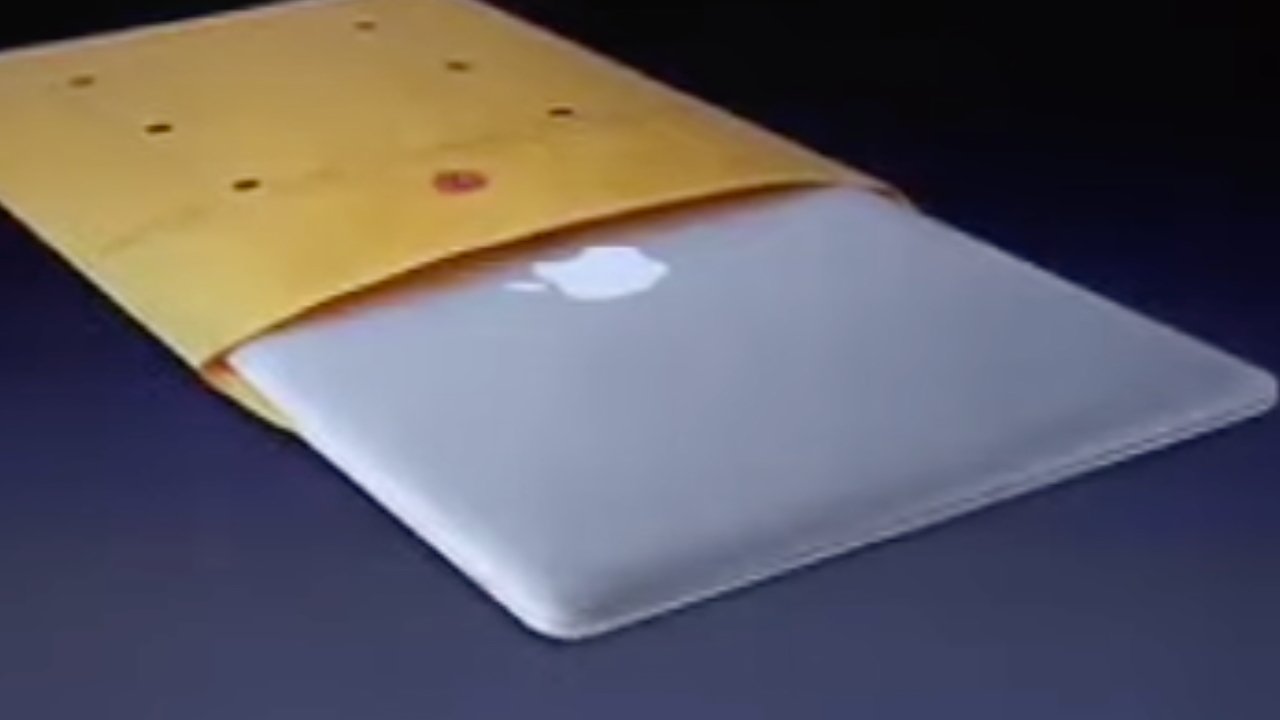
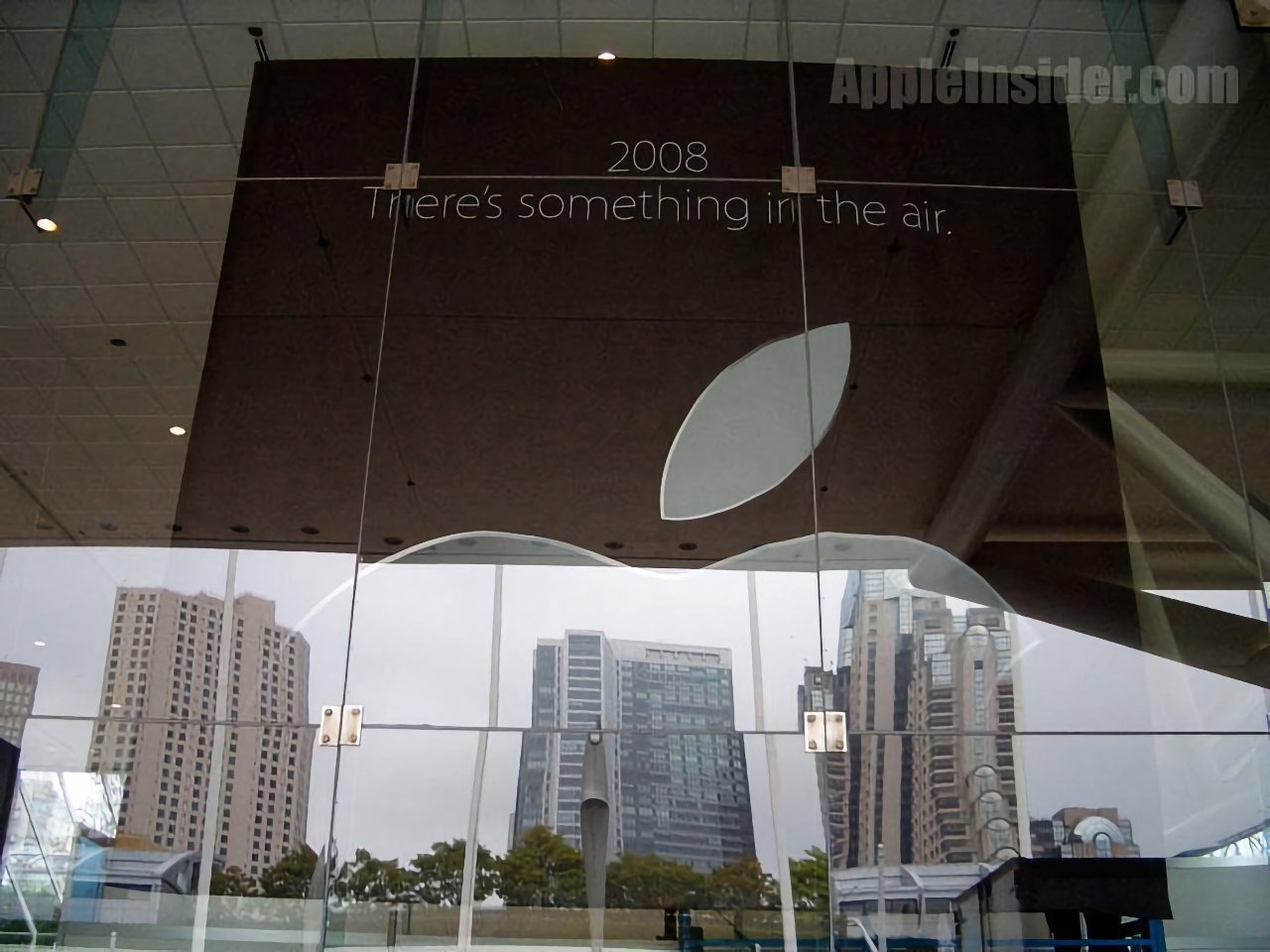
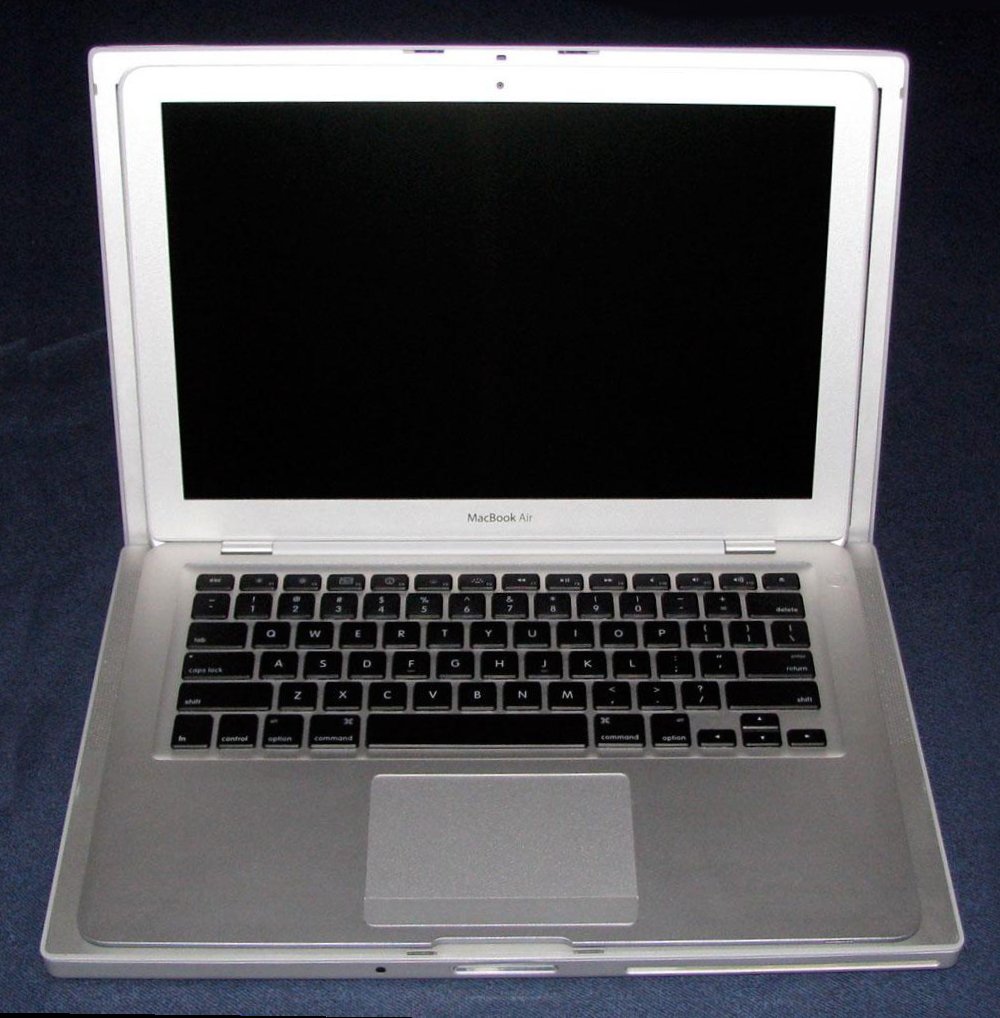
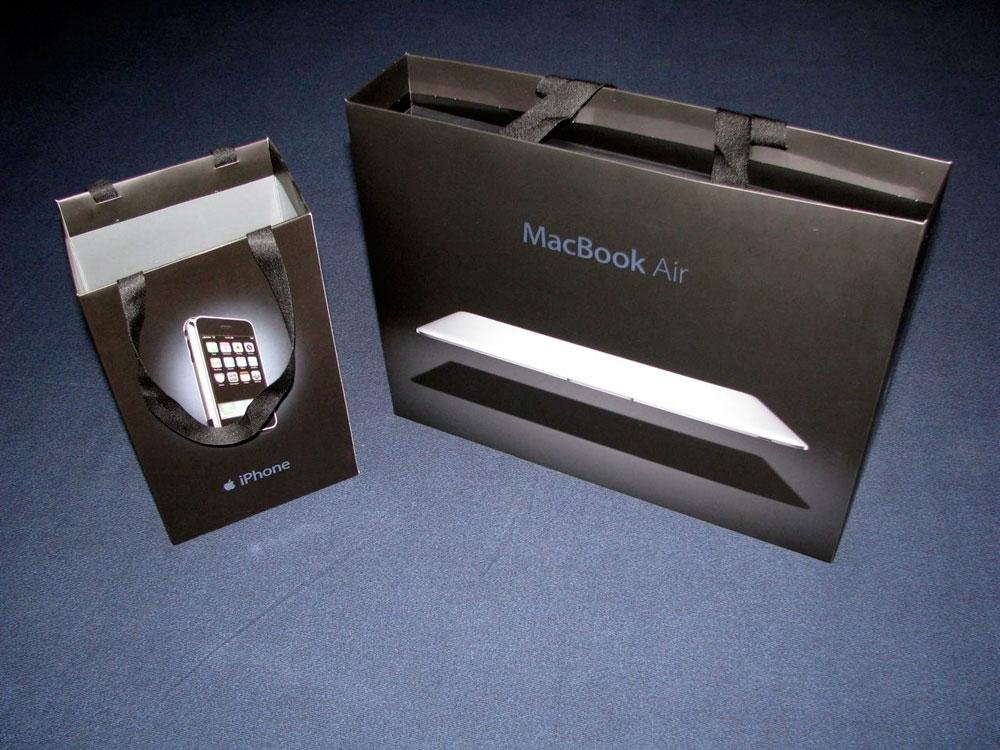











 Andrew Orr
Andrew Orr
 Sponsored Content
Sponsored Content
 Malcolm Owen
Malcolm Owen



 Mike Wuerthele
Mike Wuerthele
 Christine McKee
Christine McKee

